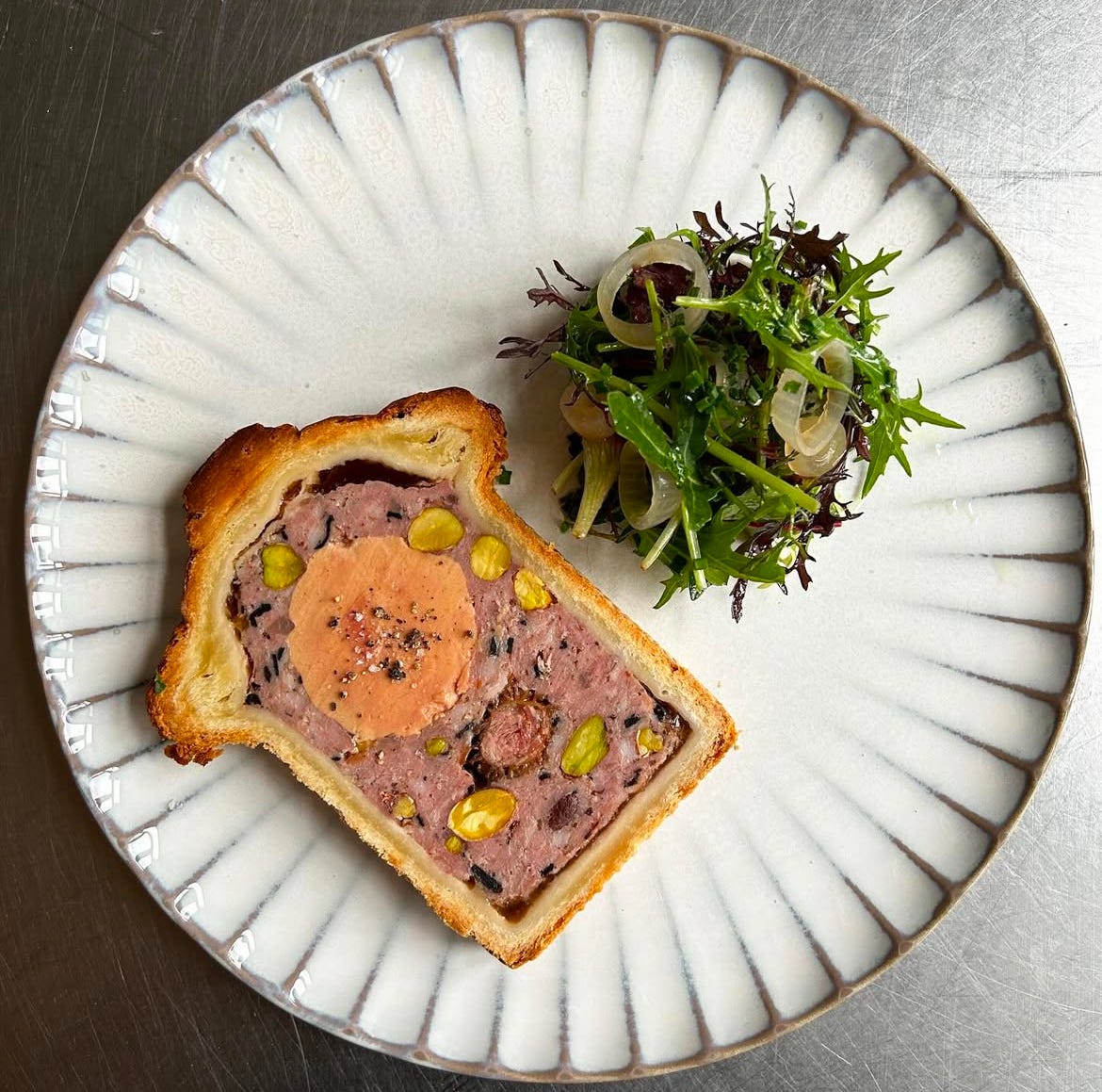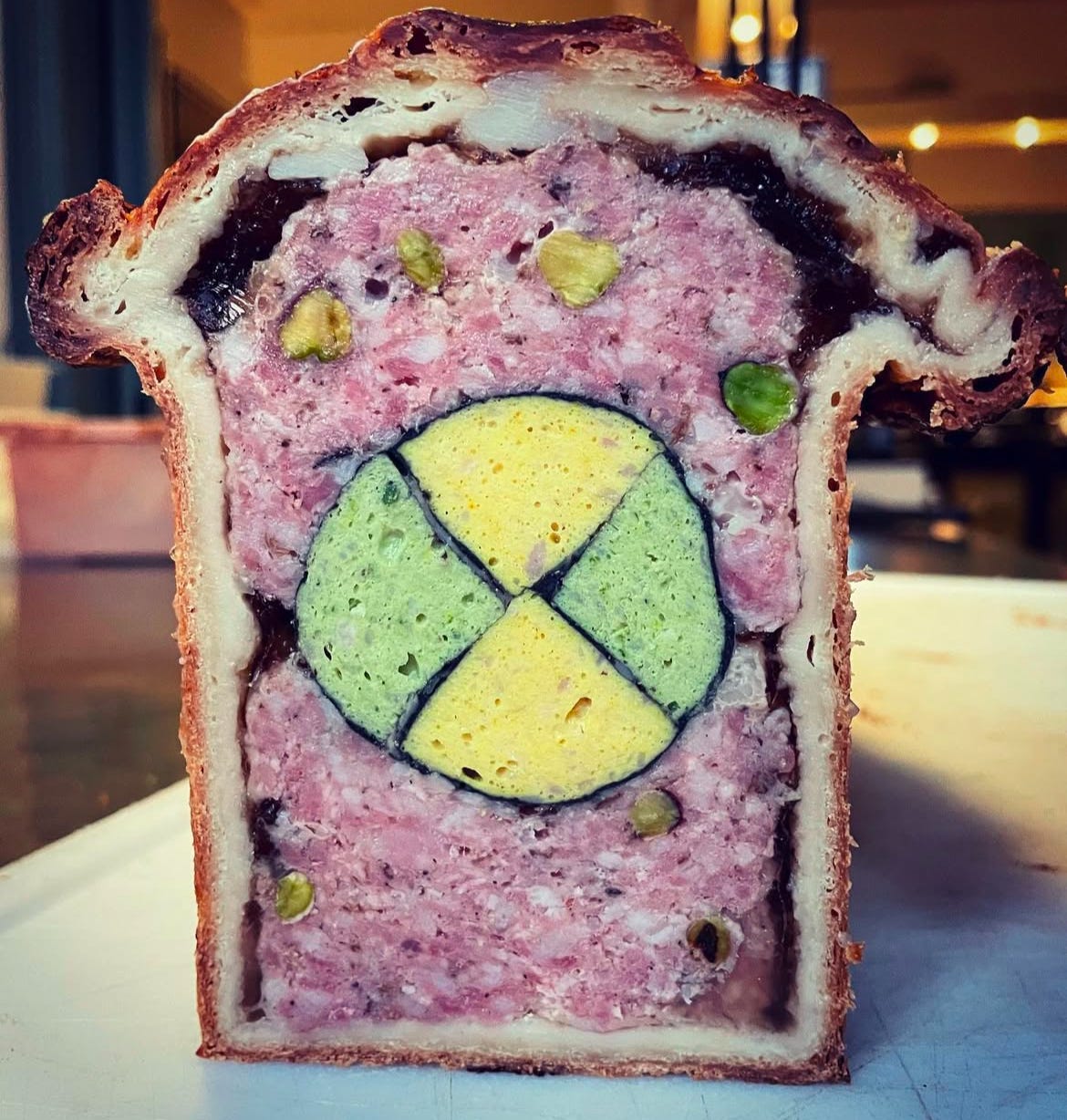I’m often asked for my Pâté en croûte recipe and i always answer clumsily with something like “oh i don’t have it written down”, or “haha you’ll have to wait for my book”, when in fact the reality is, like building a pâté en croûte, a little complicated.
Pâté en croûte recipes in books i own, tend to be pages long and assume some basic knowledge of pastry and charcuterie as well as some decent butchery skills and equipment. I know seasoned chefs who’ve attempted and quite badly failed at making one; indeed, looking back through my photo archive from some 12 years of making them, I’ve had my share of nightmare experiences as well.
This (hopefully) multi part newsletter explores pâté en croûte from the top level; all the components you need to make over a period of several days before you can finally build and bake your own pâté en croûte.
Each component is almost infinitely customizable by either changing meats from one animal to another, by swapping meat for liver, switching from one offal to another, adjusting ingredients in the pastry or even the structure of the outside casing of the Pâté. But if you are eventually mad enough to attempt this, start with the most basic version using the cheapest ingredients so that when it inevitably fails, your bank balance will not be too badly affected.
Broadly speaking a pâté en croûte consists of five basic components.
Pastry – the croûte that holds the pâté together. Generally, this is quite a heavy affair with a lot of butter and eggs, but can also use pork or beef fat. It can be “short” with pieces of whole butter or fat which gives an almost laminated (puff pastry like) look, it can be smooth and dense but satisfyingly fudgy, it can be a combination of regular pastry for the sides and base and puff pastry for the top layer, it can even be blind baked and later filled with a mousseline of liver which gives the pastry a tart shell like crispness.
Farce – (French for stuffing or filling), this is the bulk of the meat inside the pâté. Usually consisting of pork or some combination of pork and duck or chicken or anything the pâté builder fancies. There must always be some fat, usually in the 20-30% range, the grind level can vary depending how chunky the pâté should be, and the meat should always be “emulsified” with some kind of chilled liquid like ice water or wine (i like to use cider especially with pork). Emulsifying the meat means incorporating fat and water at a low temperature so that the molecules bind. This locks that moisture into he farce and keeps the finished pâté nice and moist. Keeping meat and liquid super cold helps to achieve the emulsion but milk powder or potato starch can help achieve this effect if temperature is a problem.
Inlay – Strictly speaking the inlay is any component which runs the length of the pâté in a uniform way, so that any slice of the whole pâté will contain an almost identical piece of inlay. A classic inlay could be a foie gras torchon, a slice of cured duck breast, a Galantine of chicken or quail, or any combination of the above. You are only limited by the size of the pâté. If you’re feeling particularly creative you can make multi coloured mousselines, cut and rebuild them into a multi-coloured inlay with any colour of flavour you like.
Garnish – the garnish is any component combined into the farce so as to appear at random throughout the pâté. Common garnish examples could be pistachio, walnut, dried fruits, cubes of fat, cubes of meat, cubes of cured meats such as pastrami or ham, herbs, stuffed morel mushrooms, the list goes on. Garnish should technically be random throughout the farce but i have also seen chefs meticulously arranging pistachio nuts as an inlay, in perfect lines from one end of the pâté to the other. As with all other pâté components you can be as relaxed or as anal as you like.
Jelly – because it is a cured product that would last many weeks or months into the winter, pâté en croûte used to be filled with a salty pork jelly to seal the meats inside. However, the modern jelly used in pâté tends to be a much more refined product, often a consommé of duck and pork skin, or a flavourful beef broth with winter spices or any combination of any liquid you can think of. I’m fond of using low alcoholic French cider with pork stock but if there are duck bones left from the process then duck consommé it is!
Its also worth mentioning some special equipment you will need:
Weighing scale – sounds obvious maybe but you can’t measure any of these components by cups. Get a decent scale that can measure down to 1g
Meat Grinder – not completely essential but if you can’t grind your own meat you are relying on a butcher to select and grind the meat for you. Even a kitchen aid attachment is good enough and having a grinder means you can adjust grind levels, add a bit of duck trim, grind some chicken skins etc.
Kitchen Aid – again not essential but helpful for forming an emulsion from ice cold meat and liquid without using your hands.
Pâté en croûte tin - there are a lot of options but my two Favorite are Oldenhof and De Buyer
Temperature probe – You can’t get around this one, precision baking means you have to take the Pâté out a specific temperature.
Pastry cutters etc – depending on how creative you want to get with the decoration of the pâté you may want some different types of cutters but what you definitely want are at least four large RVS pastry nozzels which act as both pastry cutters and chimneys to be used while baking.
So that ends my rough guide. In part two a slightly less rough look at the pastry; how to make it, roll it, line a tin end get it ready for the rest of the components.





